MLS Power Rankings, Week 3: Defensive woes run rampant
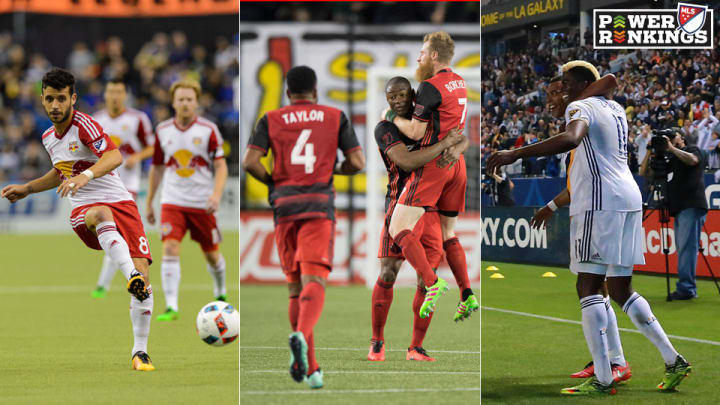
Get all of Liviu Bird’s columns as soon as they’re published. Download the new Sports Illustrated app (iOS or Android) and personalize your experience by following your favorite teams and SI writers.
The quality of defending has made Major League Soccer downright difficult to watch at times in the opening three weeks. It’s only gotten worse as the young season has gone on, and this past week gave serious credence to the notion that defending has become something of a lost art.
The Vancouver Whitecaps’ 2-1 win over the Seattle Sounders on Saturday at CenturyLink Field could be best described as a series of pedestrian defensive moments that neither team’s poorly executed attack could really exploit. Hard tackles flew in seemingly for the sake of kicking somebody, often without a legitimate chance to win the ball.
The Sounders conceded two penalties, the first on an obvious dive from Christian Bolaños that couldn’t be attributed to Seattle. The second one, though, came as Chad Marshall lunged into an unnecessary slide on Blas Pérez despite the ball from Pedro Morales leading him wide of goal into an area of little danger (Morales buried both penalties).
From Everton to MLS: Tim Howard looks forward to playing for Rapids
Two-handed shoves seemed to be passable defensive efforts on the other end, as Octavio Rivero reached out to push Osvaldo Alonso after the Seattle midfielder blew past him on top of the penalty area.
Morales had a similar effort on Clint Dempsey in the second half, which led to Andreas Ivanschitz’s equalizing free kick, the merits of which shouldn’t be minimized by the way it came about.
Players can’t be faulted for bringing the extra intensity in a rivalry match, and the first Cascadia Cup match of the season wasn’t lacking for that. The Whitecaps were whistled for an astounding 20 fouls, while the Sounders had 14 of their own, as well as three yellow cards each way.
“In a rivalry game, there will always be a few more yellows,” Vancouver goalkeeper David Ousted said after the game. “That’s that intensity just in the games, and you don’t want to let anybody past. You want to maybe tackle them a little bit harder than normal.”
It didn’t just happen in Seattle, though. The New York Red Bulls’ 4-3 win over the Houston Dynamo doesn’t inspire much confidence in either team’s defensive acumen there, either.
Didier Drogba makes his presence felt in Sacramento training stint
Failure to track runners, whiffed clearances, inability to read plays as they develop and position correctly as a result, a lack of pressure on first and second services into the box—name the gaffe, and it happened at some point at Red Bull Arena. The high foul counts and straight red cards, of which five more were handed out in Week 3, have been a result of incompetent defending as much as inconsistent officiating.
Real Salt Lake, which saw red cards given to Kyle Beckerman and Jámison Olave, fell apart after taking a two-goal lead against the Portland Timbers. Fanendo Adi benefited from two shoddy defensive moments, both from RSL as a collective and Olave individually, as he equalized late to give the game a 2-2 finish.
It’s fashionable to blame the refs these days, but MLS players and coaches really need to sort out their defensive play. Sure, the refereeing has to get better in punishing those poor tackles that come with reaching for unnecessary tackles—“Repetitive fouling doesn’t lead to cards, but a verbal barrage does lead to cards,” Sounders head coach Sigi Schmid said—but if the quality of defending goes up, that conversation becomes far less important.
In any case, obviously bad calls have been infrequent this year, or at least haven’t come as often as head-shaking defensive moments.
“We made a couple of wrong decisions today. We got lucky in certain occasions, and we didn’t in others,” Whitecaps coach Carl Robinson admitted back in Seattle. “You look at the best players in the world, whether it’s in La Liga or the Premier League, and they make mistakes, [but] they don’t make as many mistakes.”
That’s the larger point in all this as MLS looks to gain further legitimacy on the global stage. It’s these markers of quality on the field, among the players involved, that get noticed among studious observers of the game worldwide.
U.S. releases roster for World Cup qualifiers vs. Guatemala
Fans seem to find some entertainment in high-scoring games, and for some, the spectacle and excitement is good enough.
But this goes back to the 2015 MLS Cup final and beyond, when poor defending rendered the Columbus Crew’s attacking schemes moot and the more-organized Portland Timbers won it on their superior play out of possession more than with the ball.
To put it simply, MLS can’t be one of the best leagues in the world if the teams in it can’t defend properly.
Here are a few more musings on the week in MLS:
Coach’s Corner: The Whitecaps' counter
Make it one more match in which Vancouver was out-possessed by 20% and out-shot (though the Whitecaps did get more on target) and still managed to come out with the win. This is a team that’s made its reputation on gritty, counterattacking play through quick attackers.
That’s much easier to do with less of the ball. Vancouver continues to struggle when it’s asked to carry the game, and it’s a trend Robinson addressed at length when speaking with SI.com after the game.
“It’s finding the right rhythm with the different type of players we’ve got,” Robinson said. “We can play different ways, and away from home is slightly different to playing at home. We know we play in front of 22,000 crazy Canadian fans, and it’s a different type of game. Teams come and sit back at our place, but we’ve got to be better at breaking them down.”
Critiquing the 2016 MLS uniforms
Chicago Fire
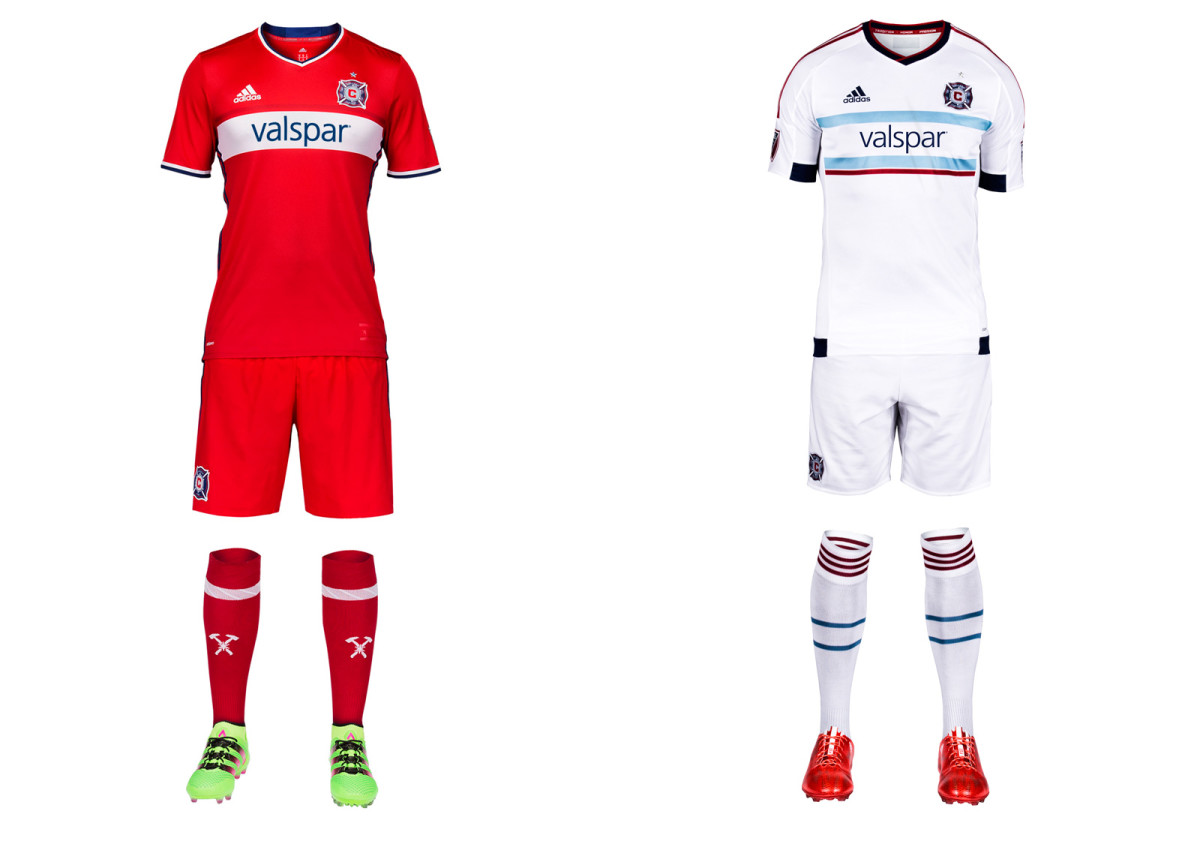
The optimism surrounding a new GM and head coach is accompanied by a welcome return to the red kit and single white hoop the Fire wore when winning trophies. Chicago was the first MLS team in mono-red and has dibs on a look that unfortunately became way too prevalent. The hoop on the new primary uniform is too thin, but otherwise it’s a crisp design that should be well received by fans, some of whom protested the red-and-blue offering worn in 2014-15. The all-white away kit featuring hints of the city flag carries over from last year.
Colorado Rapids
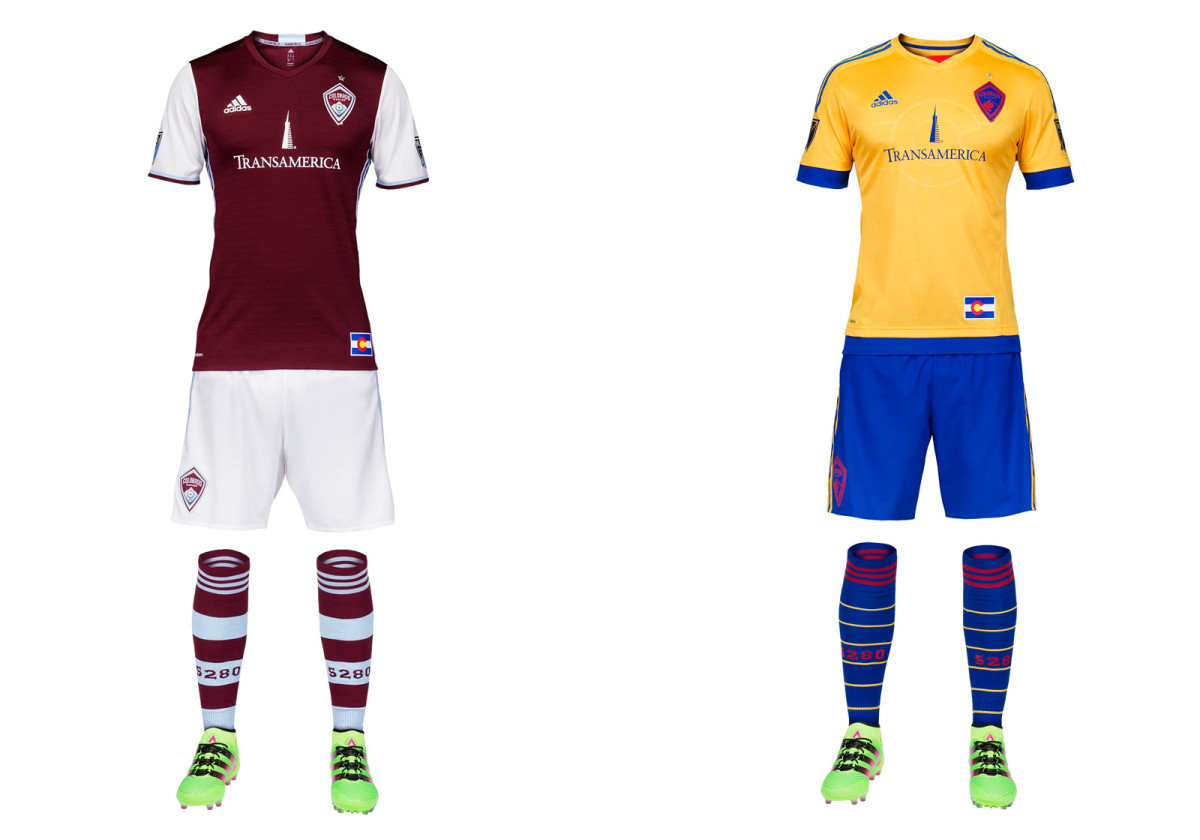
Colorado made just a few very subtle changes to its home uniform this year, and that’s fine. The three stripes moved from the shoulder to the side, there’s a bit of color on the cuffs and the hoops on the sock widened, which is awesome. The burgundy and white is elegant and immediately recognizable. The club's problem remains the logo, a skinny shield featuring a mountain (not rapids) similar to its NHL, NBA and MLB neighbors. It’s tough to suggest a fourth crest for a team that’s had trouble establishing an identity, but it might help. This one leaves no impact. Colorado’s sharp state flag-inspired away set carries over from 2015.
Columbus Crew SC
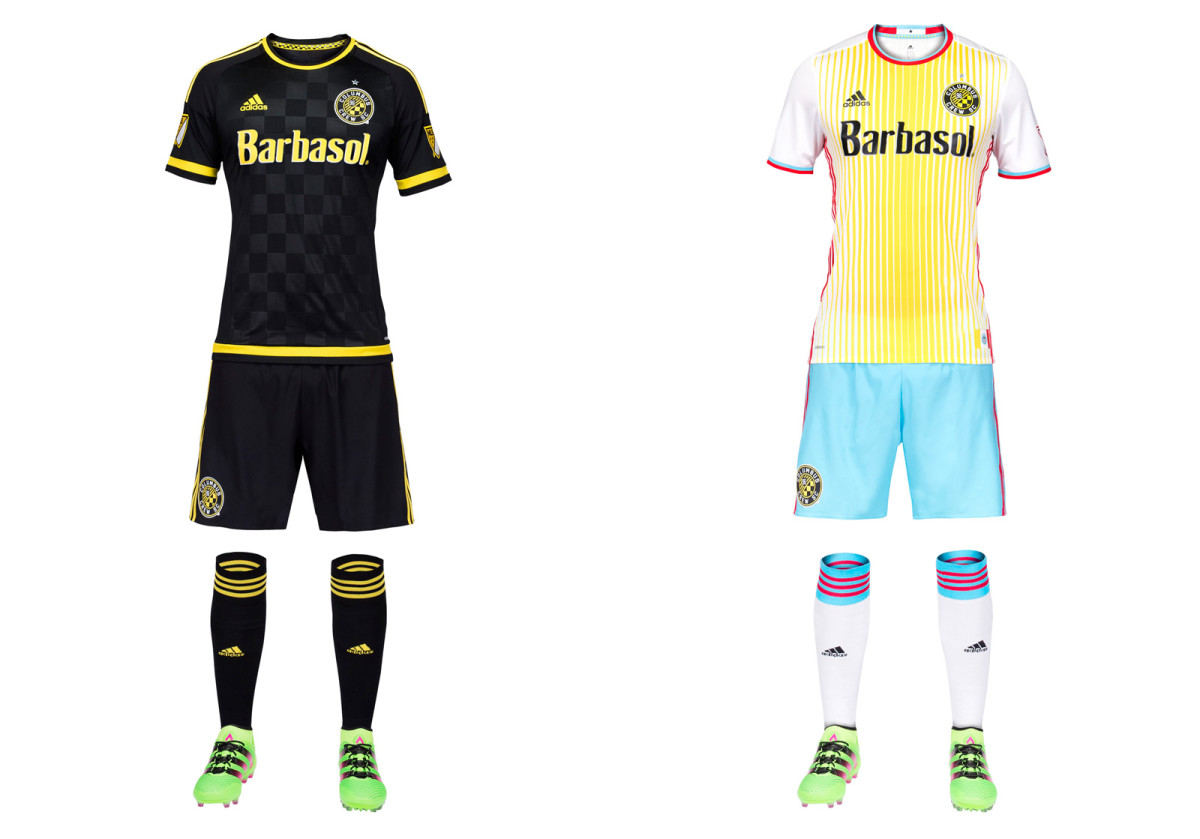
Once known as "America’s Hardest Working Team," Crew SC is trying too hard. For 17 years, Columbus was the only club in MLS, and one of the few in the world, to wear all-yellow. It was immediately recognizable, looked great on the field and was a genuine brand. Now it’s gone, replaced as the primary by last year’s away set. Mono-black is more closely associated with D.C. United. The new secondary is a shock to the system. Designed to reflect the yellow, white and red city flag, it’s certainly distinctive. Clubs are welcome to take chances with their away kits, but only if the overall brand holds steady.
D.C. United
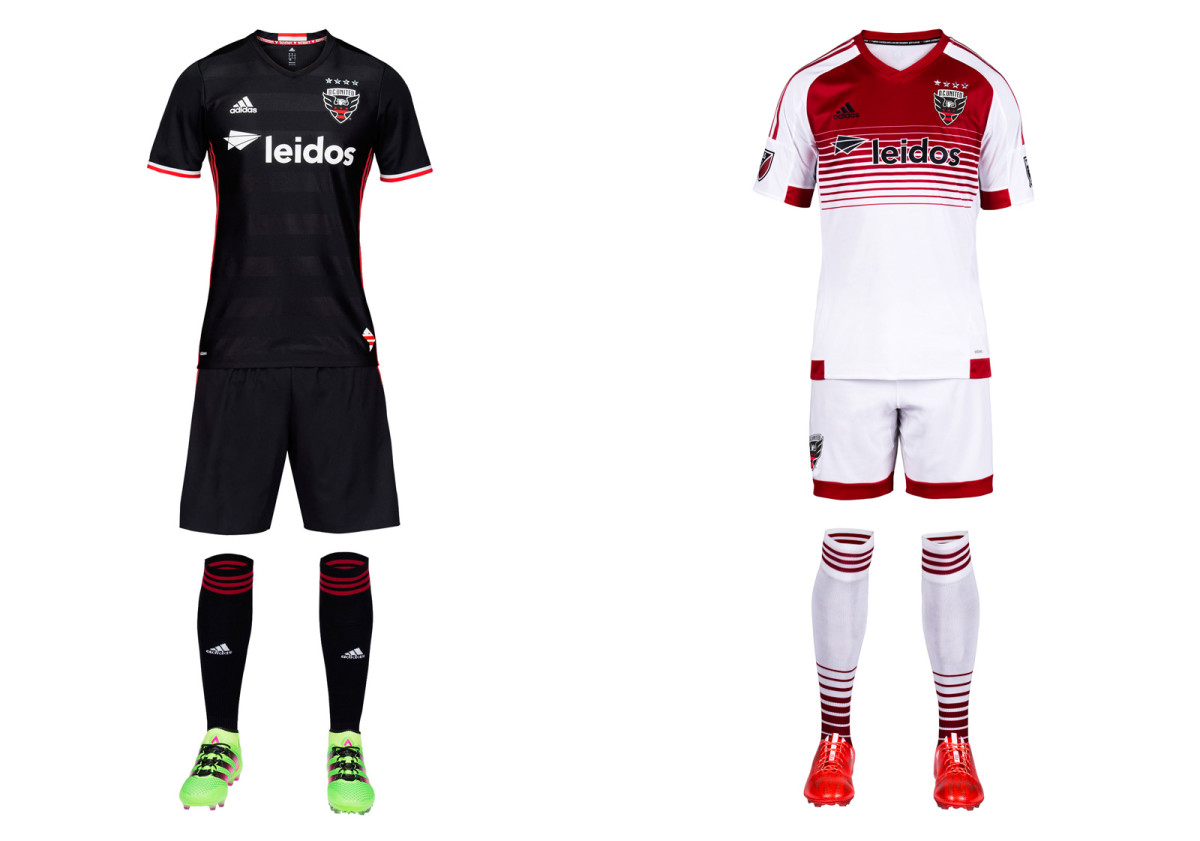
A new stadium in the nation’s capital (scheduled to open in 2018) is preceded by a new club logo, United’s first since 1998. We love the wings breaking through the shield and the redesigned font, but wish the stars on the city flag–which replaces the old ball and championship star–were a bit larger. They’re lost on the black background. The new home kit maintains the club’s classic, all-black brand and the sad absence of the white chest stripes that adorned the most iconic uniform in MLS history. There must be a way to bring those back.
FC Dallas
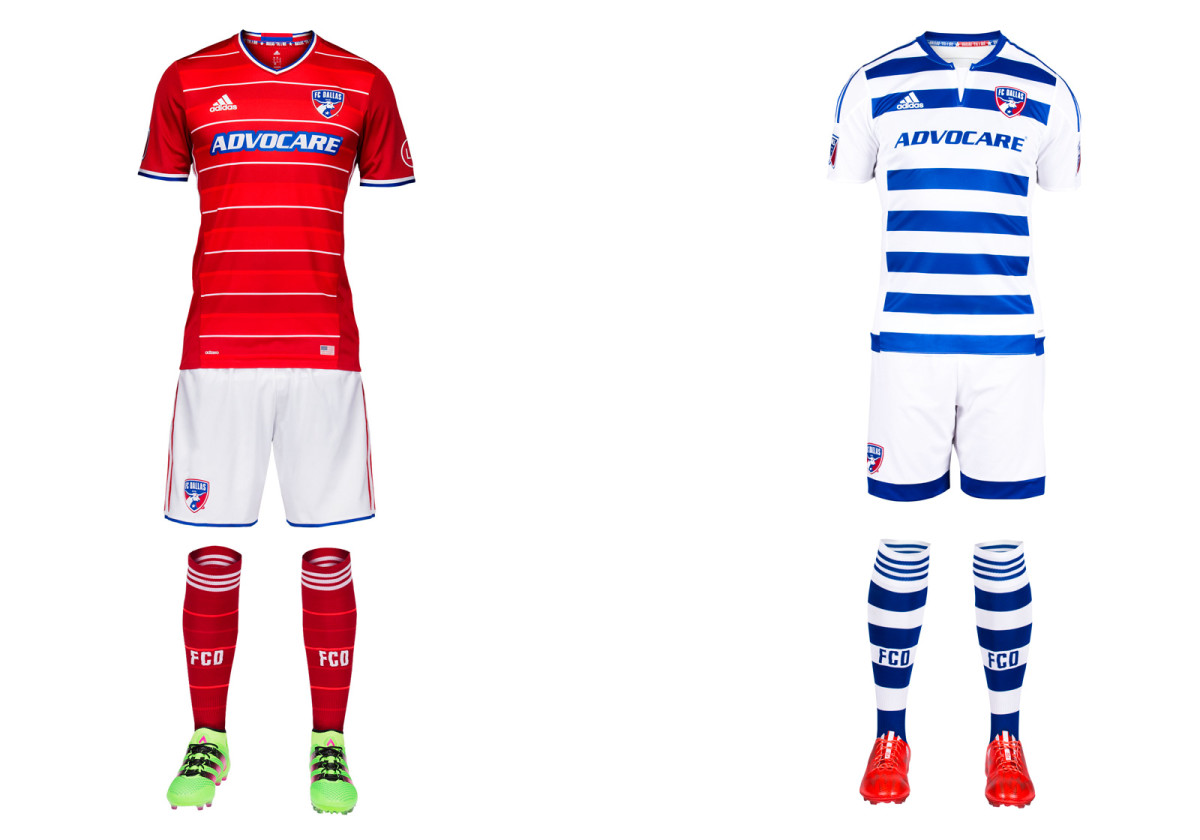
FCD’s new home kit is the nicest in club history. The hoops that accompanied the 2005 rebrand were a good idea but always poorly executed, and Dallas gave up on them two years ago. But the common mono-red look was a failure, leading to this year’s stylish primary. The pinstripe white hoops are sleek and distinctive and aren’t overwhelmed by Adidas’s panels and seams. The uniform pops with the addition of white shorts. Hopefully FCD takes the same approach with the blue-and-white secondary kit next year.
Houston Dynamo
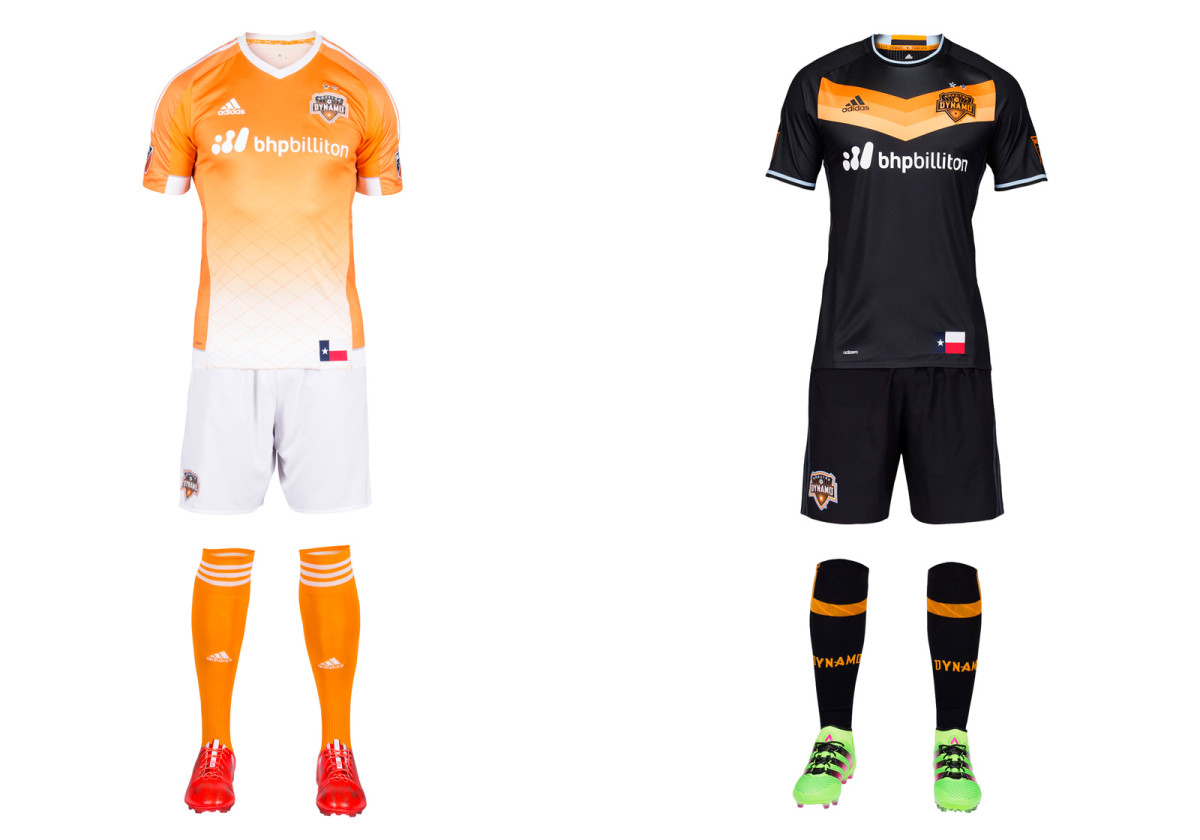
Houston’s new away uniform is a stunning departure from the traditional white. Black has been part of the club’s palette (check the logo). It now dominates the secondary kit save for a bright orange chevron on the chest reminiscent of the Astros’ famous “Tequila Sunrise” jerseys and the shirts Germany wore when winning the 2014 World Cup. We may not see the black too often at home (it’s hot and humid in Houston), but it should sell well. The orange fade on the primary set carries over from 2015. The Dynamo occasionally wear mono-orange, which is a mistake. The white shorts remain the way to go.
LA Galaxy
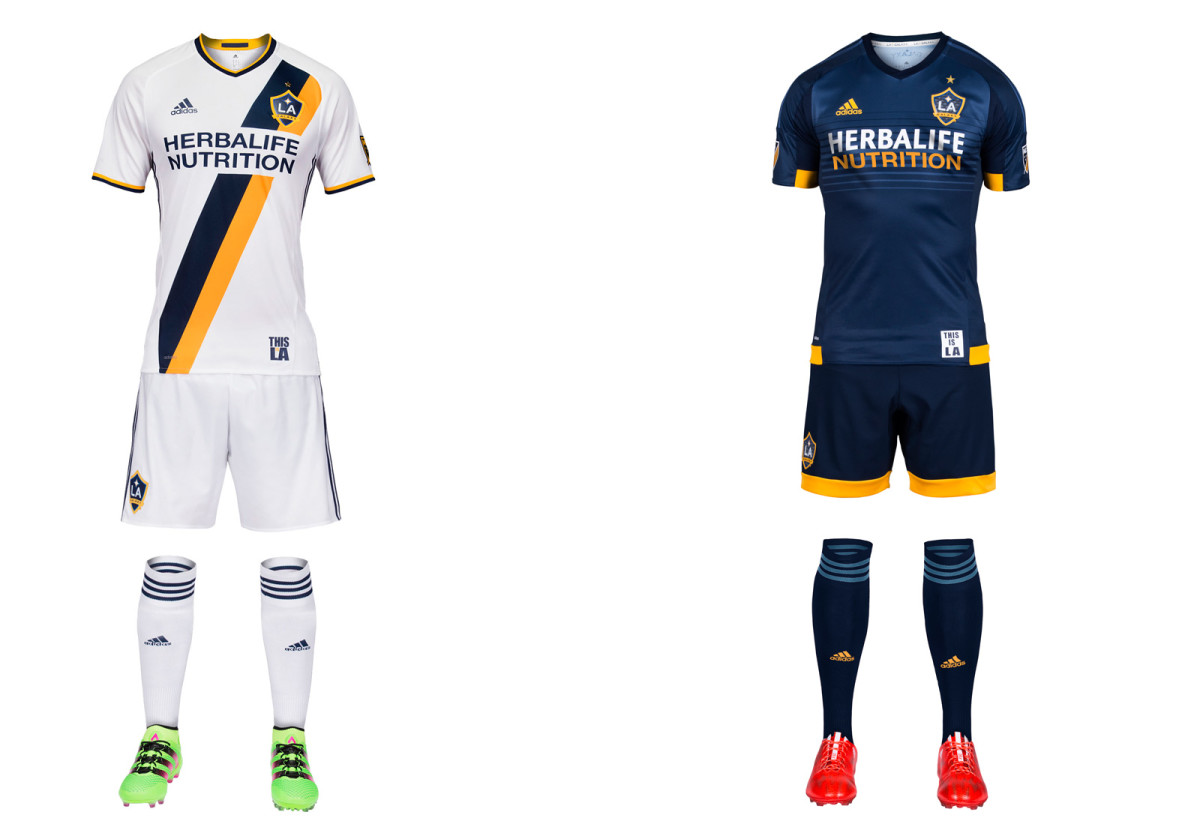
Credit to LA for sticking with the sash introduced in 2012. A club that started black-and-teal and progressed to yellow-and-green finally has an established look to call its own, and it’s a nice one. The new home uniform splits the sash into the modern team colors of blue and yellow, with corresponding flashes on the cuff and collar. It would be perfect save for the enlarged sponsor logo, which cuts too much from the middle of the shirt. The Galaxy carry over their classy blue away kit and thanks to the league's complex new championship star system they'll now wear one gold star above the crest, symbolizing five MLS titles.
Montreal Impact
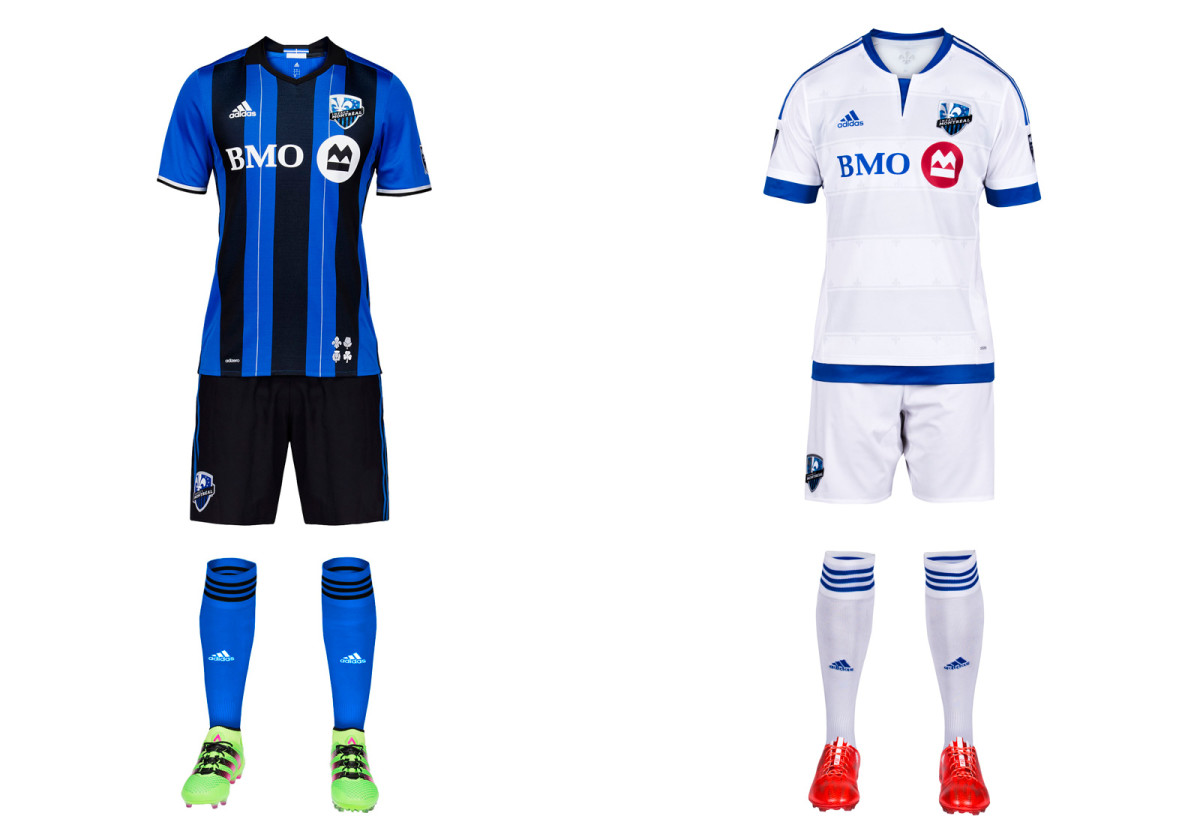
Finally! We never could understand why the Impact (launched in 1993) didn’t opt for their old school blue and black stripes when moving to MLS in 2012. There was history with the plain blue primary as well, but in the end it was just another anonymous monochromatic uniform in a league full of them. The stripes returned as a popular third option in 2013 and now have been elevated to their proper place as Montreal’s home kit. Black shorts, blue socks and silver highlights round out one of MLS’s most distinctive looks. Maybe the Impact can wear those shorts and socks on the road as well.
New England Revolution
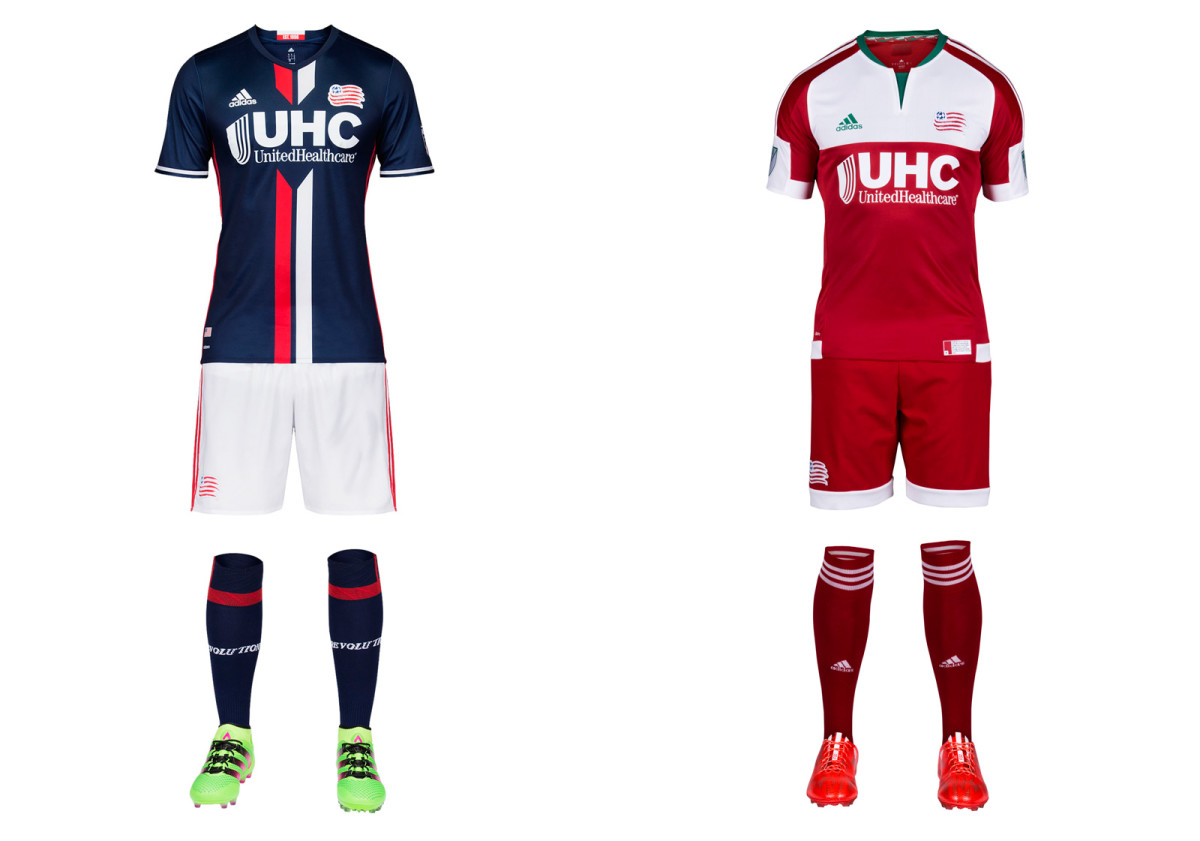
No team embraced the post-1996 regression to the bland like the Revs, who wore the most nondescript uniforms in MLS for years. That changed in 2014 with the addition of white shorts to the navy blue home kit. A total departure from the old all-white aways—a red homage to the old regional flag—followed last year. This season’s primary represents another step forward. The white shorts remain, thankfully, while a beautiful new jersey features red and white stripes down the center. The club said the look is inspired by American Revolution-era jackets. The secondary kit carries over. The inspiration there is commendable but the boxy execution is lacking.
New York City FC
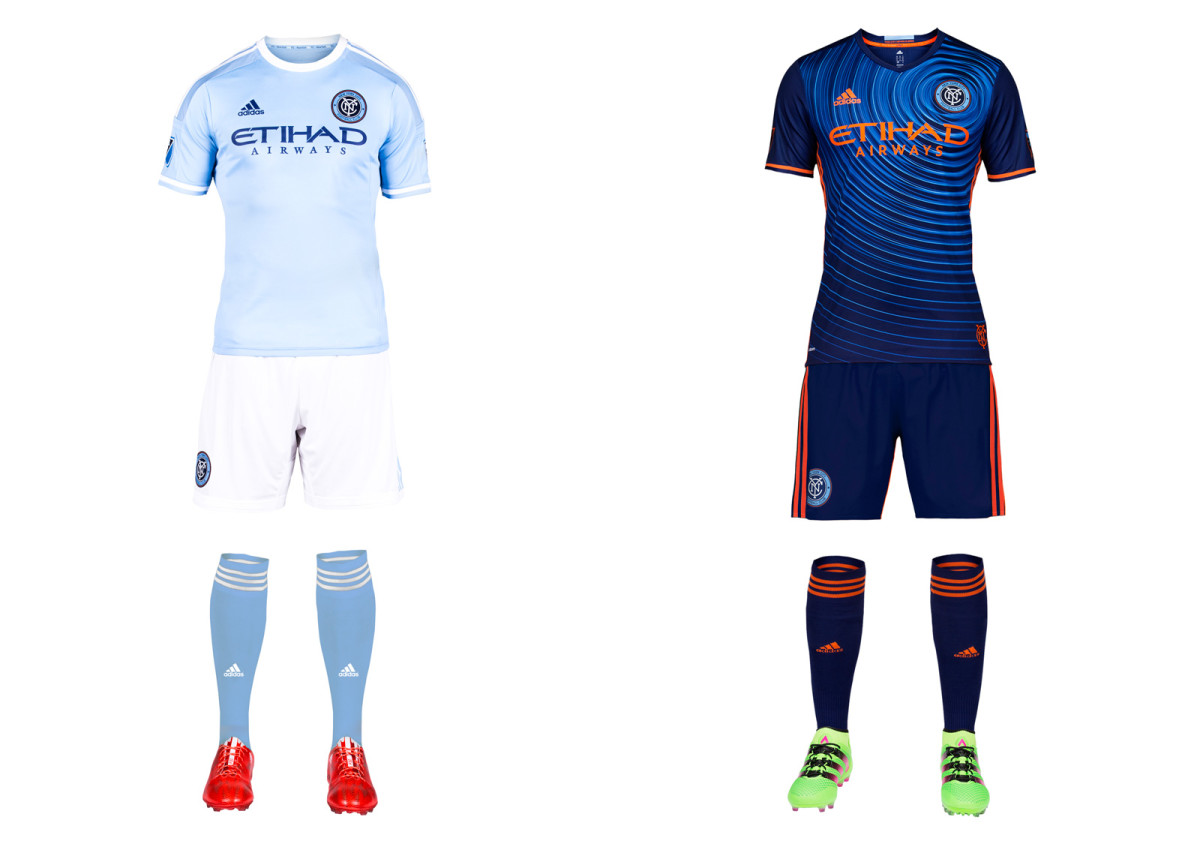
MLS didn’t need another all-black uniform, and NYCFC did the right thing by ditching last year’s away set in favor of something more aligned with the club’s colors and branding. What they came up with, however, will take some getting used to. The dizzying new secondary kit is anchored by a blue jersey with a “ripple pattern inspired by the energy of the five boroughs.” It’s unique, for sure, and while some won’t like it, secondaries don’t necessarily need to be timeless. Adidas also supplied orange shorts as an option, in case the mono-blue isn’t loud enough. NYCFC’s classy home uniform, which looks good even though Manchester City wore it first, carries over from its inaugural season.
New York Red Bulls
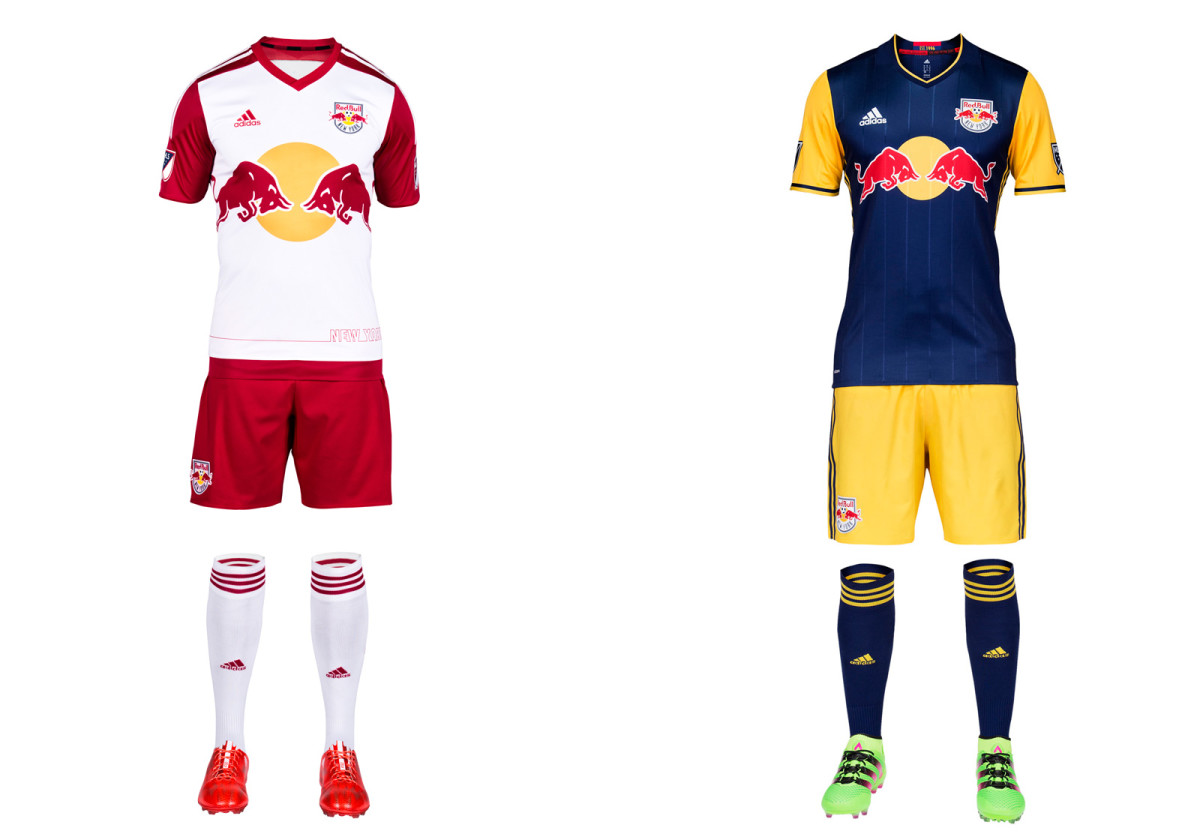
New York is red, except when it’s navy blue and yellow. Despite some supporters’ preference for a red away uniform, the Red Bulls are sticking with the colors they share with the parent company’s teams in Leipzig and Salzburg. The new secondary, which now features yellow sleeves, certainly is eye-catching even if it doesn’t stir fans’ souls. NYRB’s brand transcends the crest and kit, anyway. The stadium, history and the personalities who’ve donned MetroStar red-and-black and Red Bull red-and-white are what give this club its identity. NYRB sort of acknowledges that with the red-and-black necktape and MetroStars shield inside the new away jersey. The red-sleeved home kit is identical to last year’s.
Orlando City SC
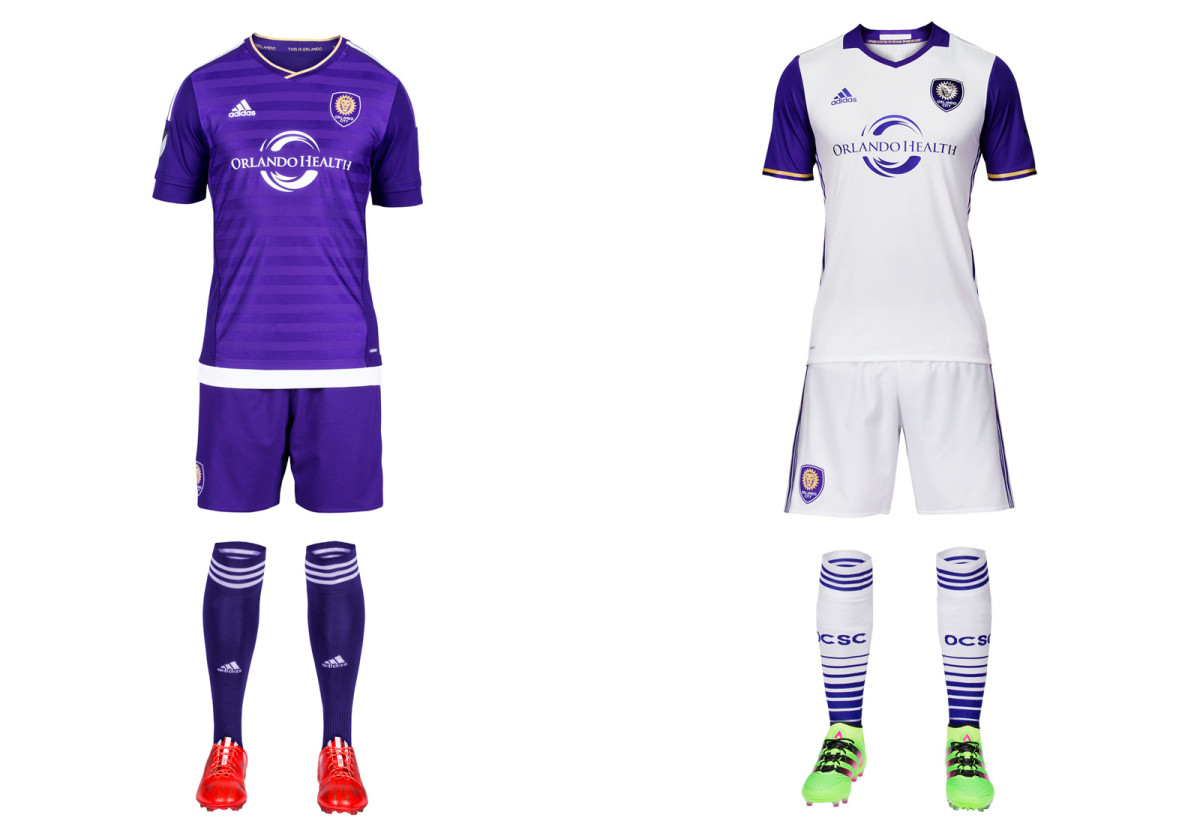
Purple is the defining feature of Orlando City’s brand, but the club blew it during its expansion season by rolling out a plain white away kit that looked too much like all the others. Now there’s progress in the form of purple sleeves, which add a welcome bit of color and make the new secondary uniform one that only Orlando could wear. The crest features a "3D" lion. The monochromatic home set stays the same. Swap the socks–white at home and purple on the road–and City would be close to perfect.
Philadelphia Union
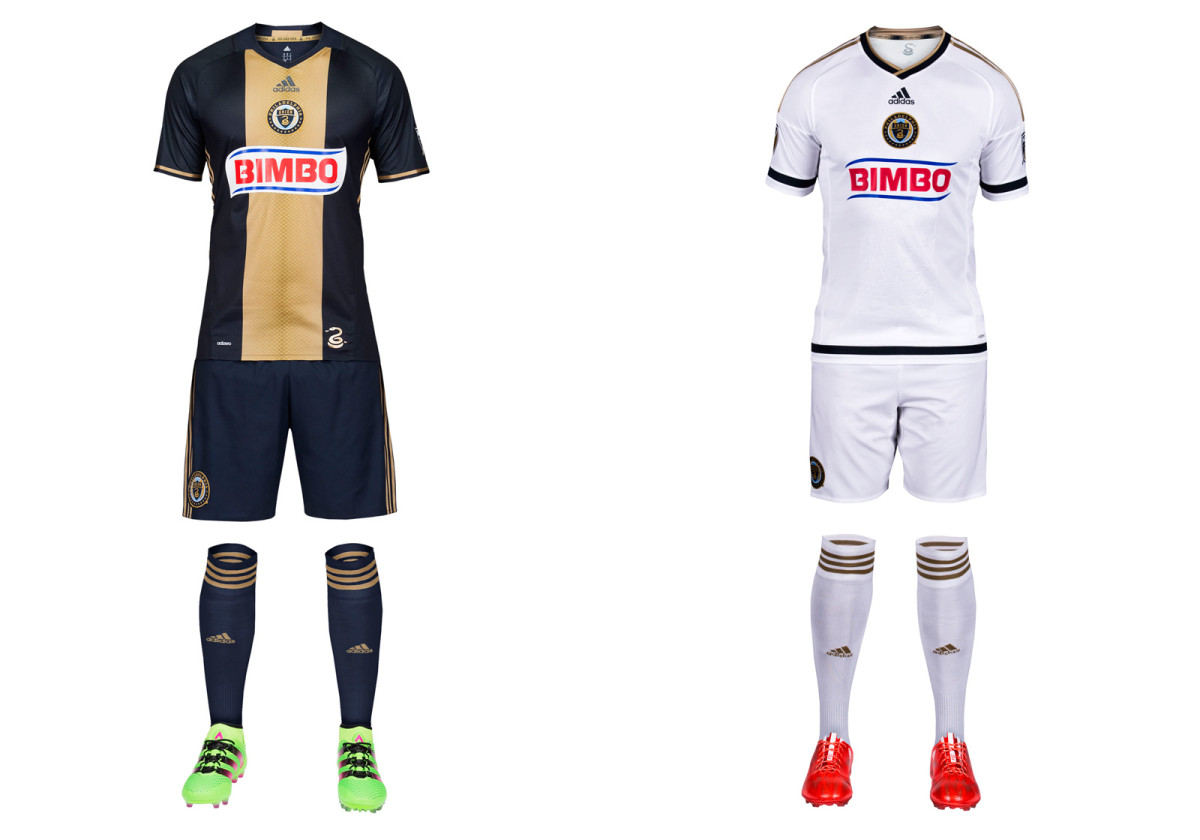
The Union’s home uniform is a modern classic, apart from a garish sponsor logo that looks pasted on instead of integrated with the rest of the jersey. This year’s new primary kit features a lighter gold down the middle, an understated snakeskin pattern (taken from the serpent in the club logo) and the departure of the pinstripes used in 2014-15. It’s as classy and distinctive a set as you’ll find. If only Bimbo could cooperate. Meanwhile, we’re stuck with the regrettable, lazy away kit for one more season.
Portland Timbers
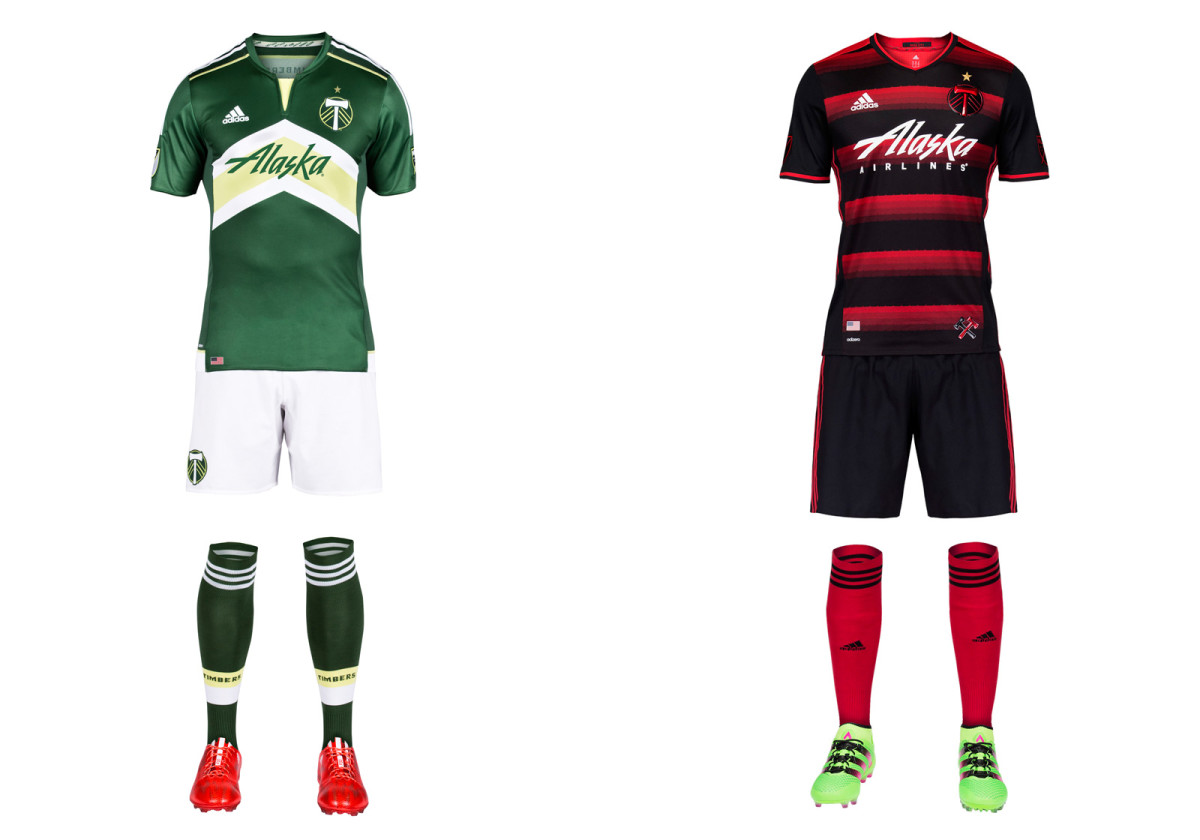
Portland’s "Rose City Red" away uniforms continue to darken, but the overall theme is maintained with the champions’ striking new secondary set. The mostly-black jersey (there's more red on the back) features hoops in shades of red complete with a subtle thorn motif. Red socks add a bit of contrast that would be lost if they were black. The green-and-white home kit is the same as last year’s except for a revised sponsor logo. For Timbers fans, of course, the best part is the new gold star above the crest.
Real Salt Lake
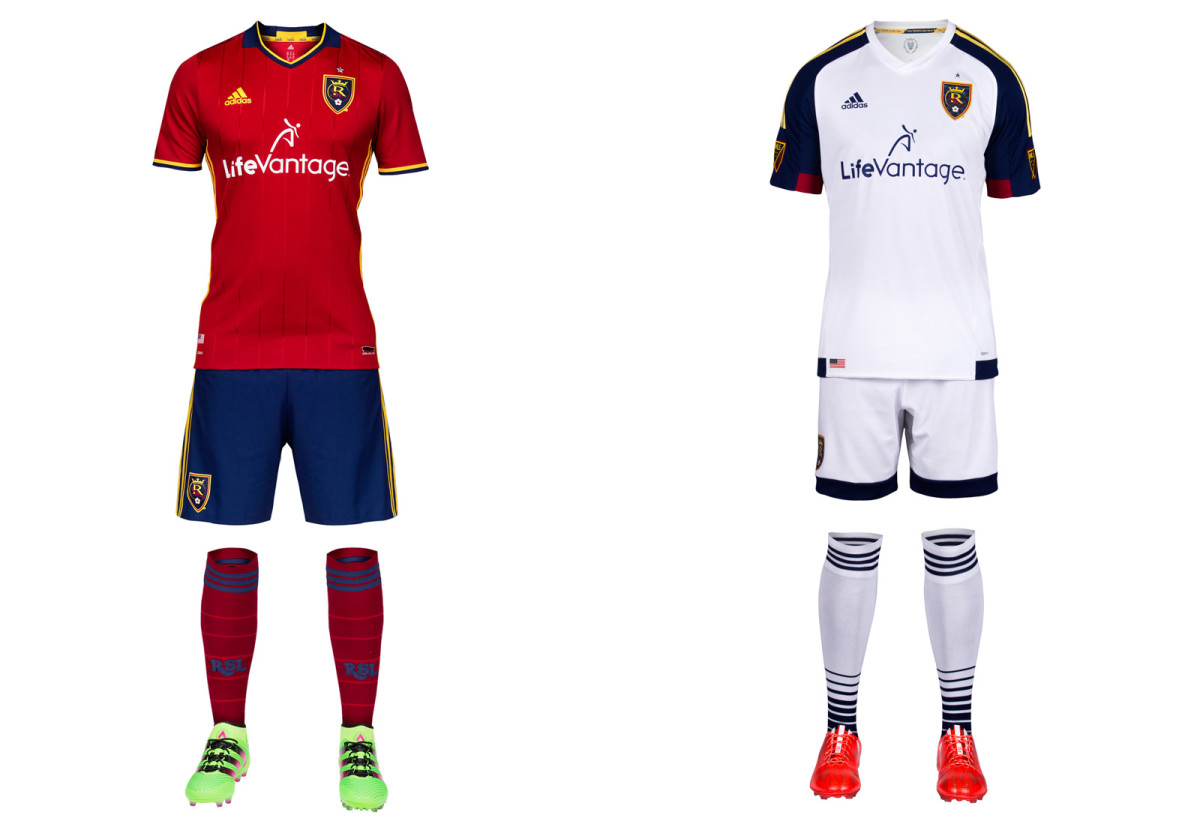
After six years in all-red, RSL at long last is returning to something resembling its unique, championship-winning look. After claiming the 2009 MLS title in red/claret jerseys (with blue/cobalt sleeves), blue shorts and blue socks, RSL inexplicably opted to become one of several mono-red teams. Bad uniforms and a trio of lost finals followed. If there was a kit curse, consider it reversed with the new home set, which features sublimated pinstripes on a sharp red jersey and a return to the cobalt shorts. RSL is RSL again. Let’s hope some variation of “victory gold” replaces the all-white secondary kit in 2017.
San Jose Earthquakes
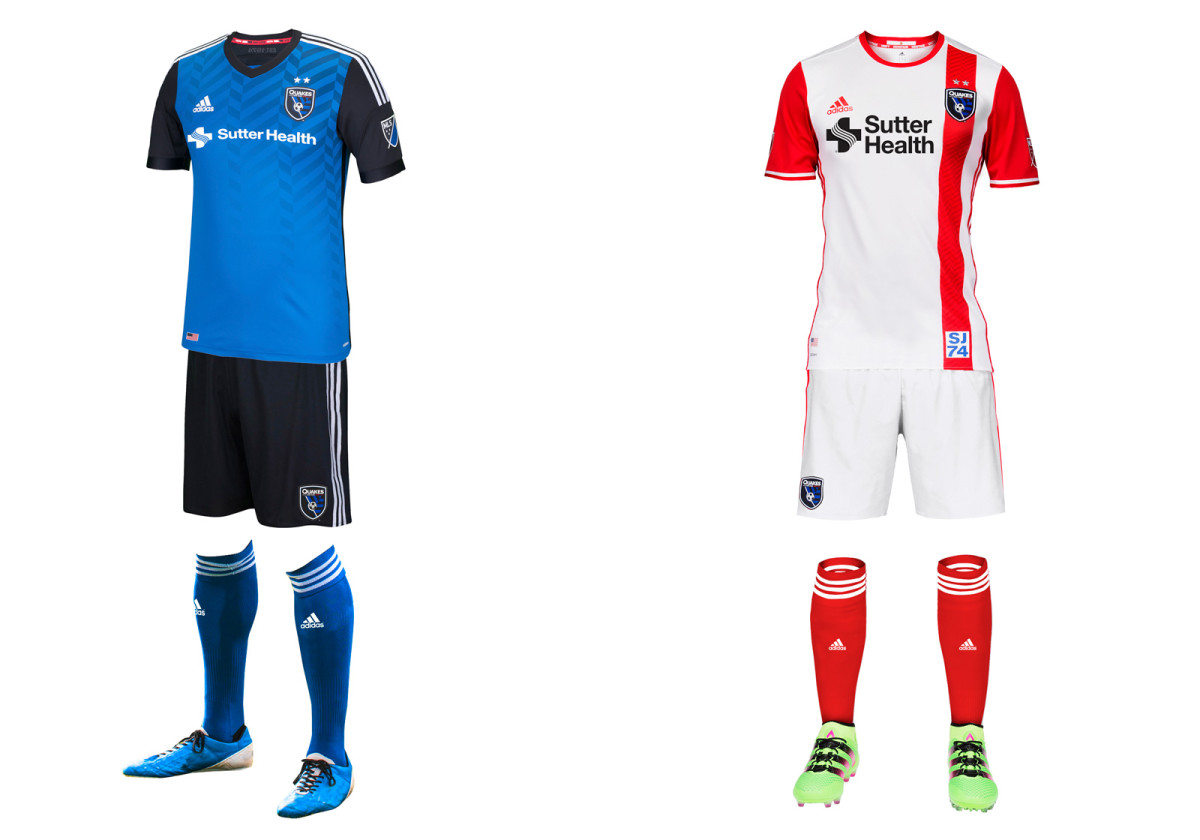
San Jose’s 2014 brand refresh now feels finished with the introduction of a much-improved away set that actually features some red, which connects the modern-day Quakes to their 1970s and ‘80s predecessors. The red stripe, sleeves and socks create a unique, balanced look that ties the club’s crest, primary and secondary kits together. There's also a tiny scorpion inside the neck paying tribute to the branding fiasco that was the San Jose Clash. The sharp blue-and-black home uniform carries over from last season with the addition of the Sutter Health logo. The Earthquakes were the last holdout—for the first time, every MLS team has a jersey sponsor.
Seattle Sounders FC
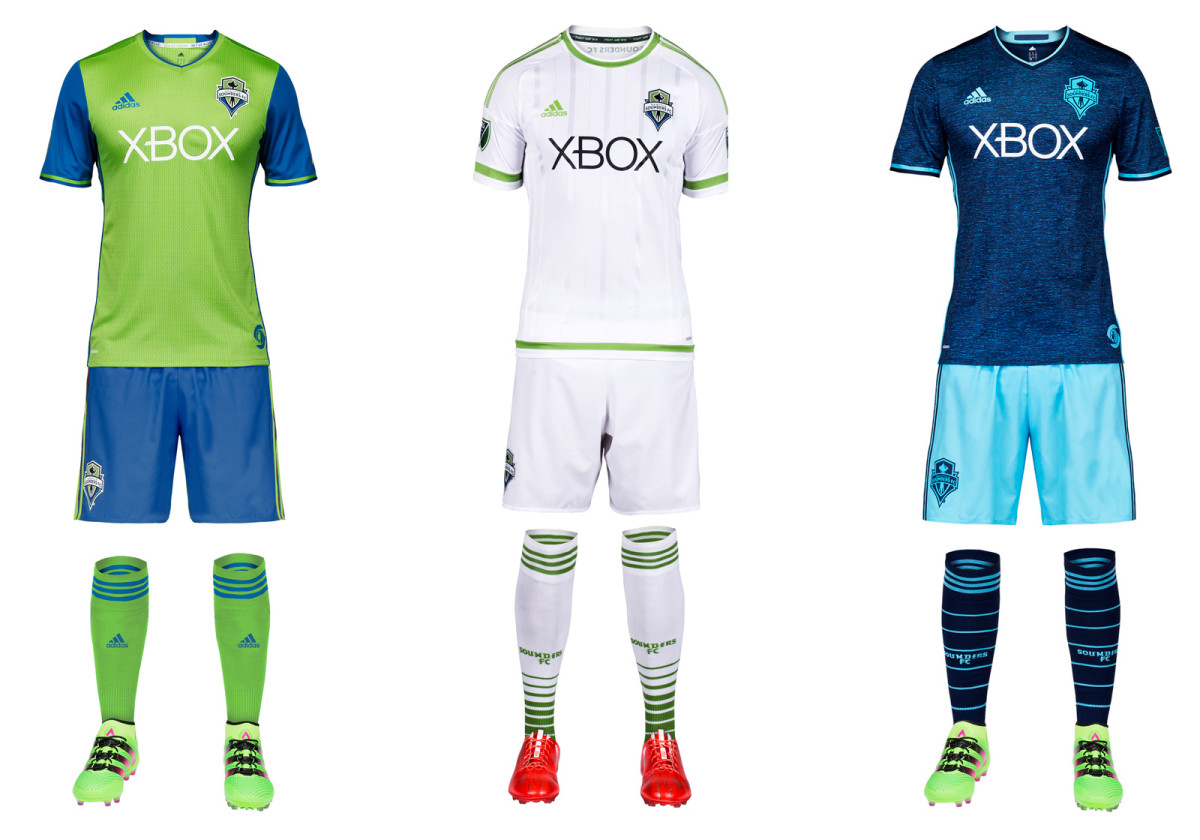
The only club to introduce two uniforms this year, the Sounders will sport a slightly adjusted version of their iconic rave green primary and a new third kit designed to reflect the colors of Puget Sound. The home set now features blue sleeves and an ’SS’ pattern on the body of the jersey. Seattle may continue the odd tradition of swapping the shorts and socks when wearing the primary on the road. It returns to cyan (and shades of darker blue) on the new third kit, which has a nice Cascadia feel. Hopefully, its arrival means the Sounders will wear the silly all-white secondary as infrequently as possible.
Sporting Kansas City
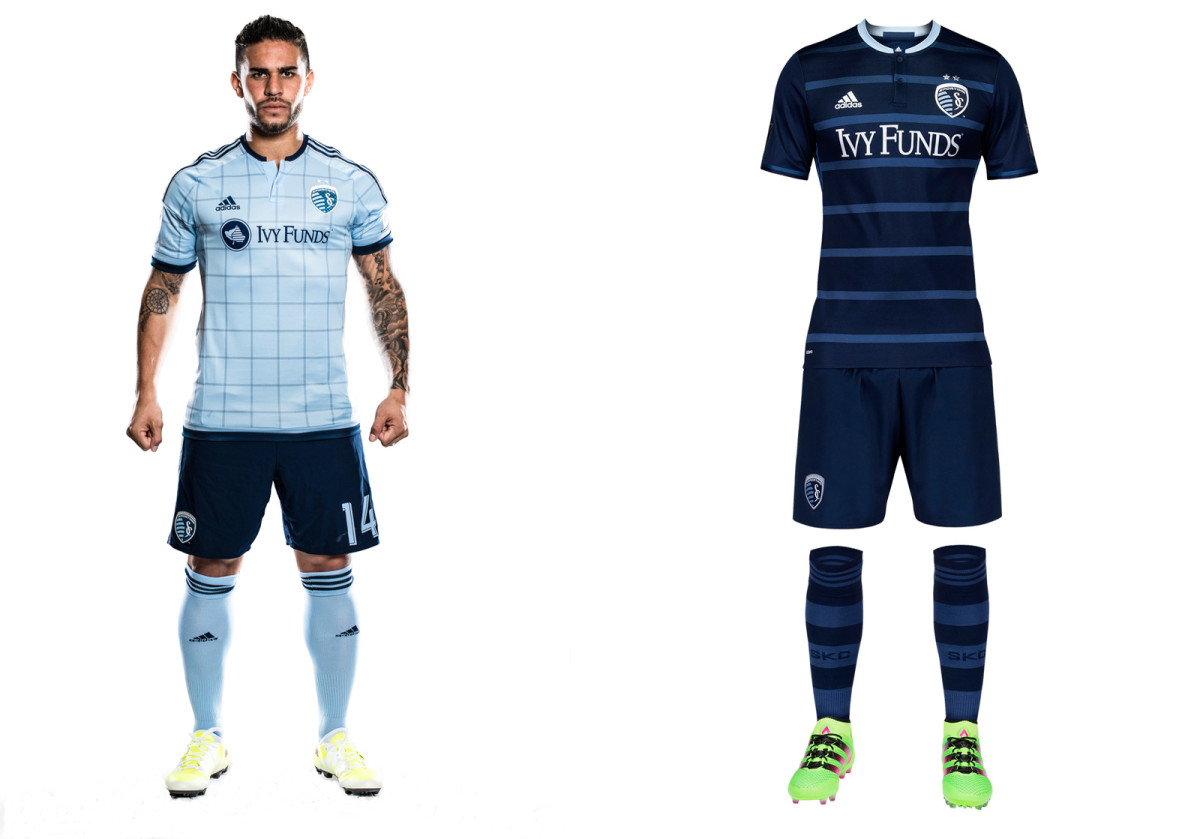
Uniforms typically run on two-year cycles, meaning Sporting had no choice but to move on from its spectacular hooped 2014-15 away set. The replacement is nice enough and the jersey looks good on its own, but the full kit is a bit bland in comparison. The thin hoops are "tonal" rather than "Sporting" blue. The metallic silver numbers and sponsor logo add a bit of glitz. The checkered home uniform debuted last year and still looks good with the dark blue shorts. SKC also will continue wearing its all-white third kit on occasion.
Toronto FC
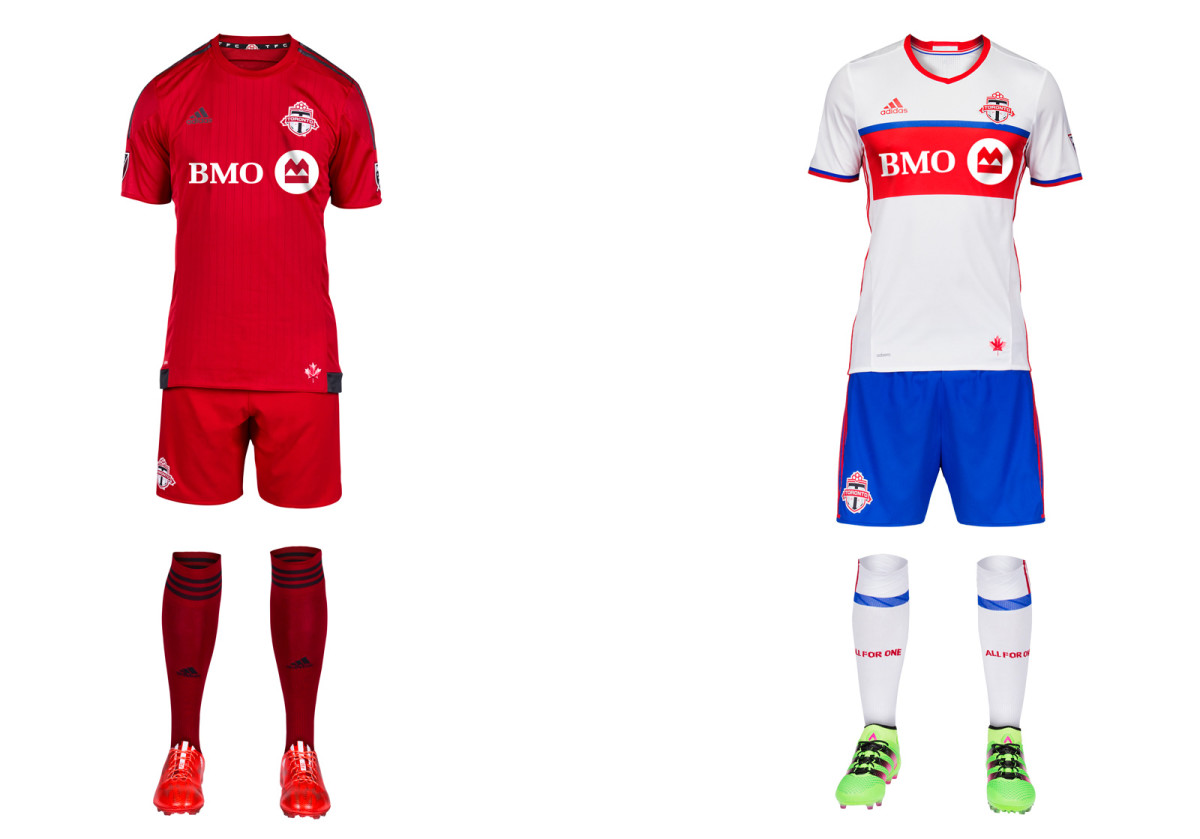
Entering its 10th season, TFC will include blue in its uniform for the first time. The club’s new away uniform is a colorful nod to the city and its soccer past. Toronto’s flag and its NHL, MLB and CFL teams are primarily blue, and the NASL’s Metros-Croatia and Blizzard wore red and blue in the 1970s and ‘80s. The kit stands out without being garish and means something to the club. Well done, TFC. It also can be worn with red shorts. Gone is the classy dark gray, which we wish was more prominent in the all-red primary.
Vancouver Whitecaps
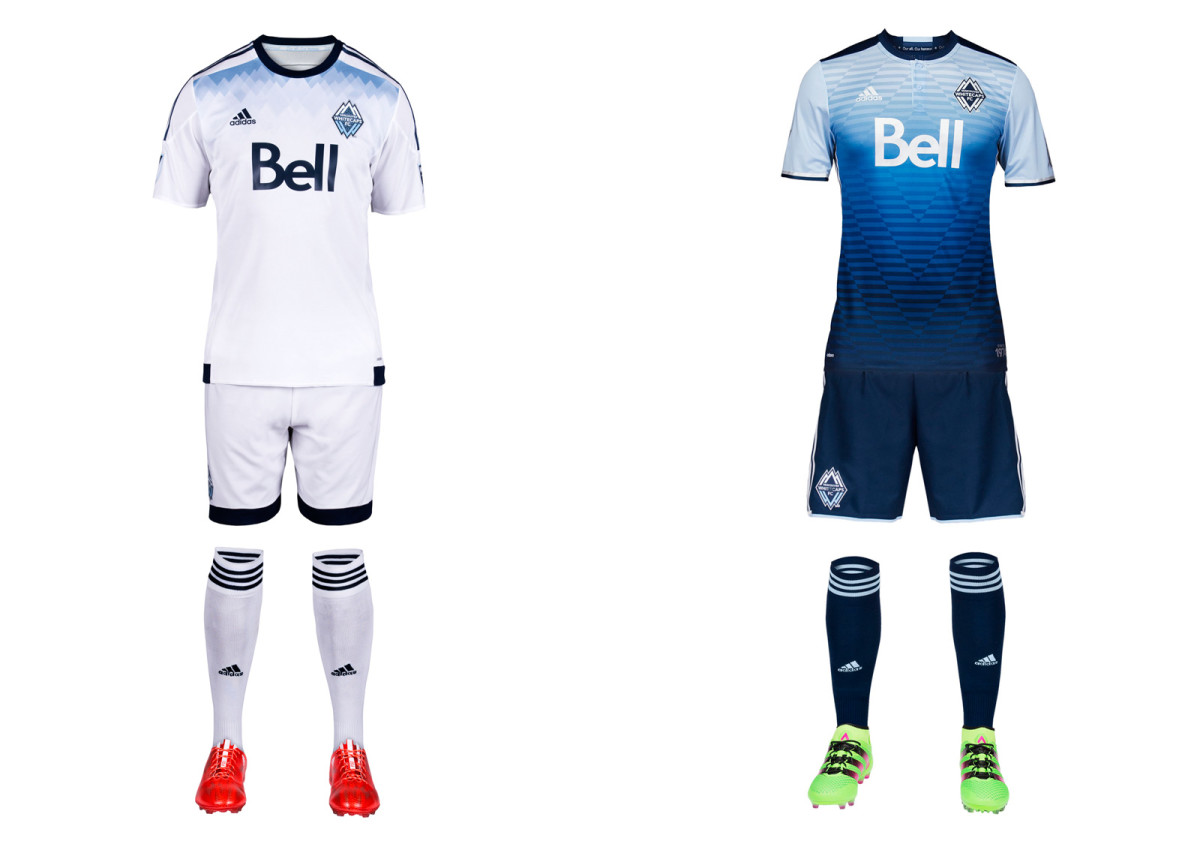
Vancouver’s new away uniform is its most daring design to date, barring the brown third kit introduced in 2012. But where that one was forgettable, the team’s “Sea to Sky” jersey leaves an impression. The blue gradient evokes the horizon, the North Shore Mountains reflecting on the surface of the water and the club’s initials. It’s gorgeous. The all-white primary carries over from 2015. It includes a bit of subtle blue shading at the shoulders but is otherwise pretty anonymous. The Whitecaps just proved they can do better.
He expanded on the idea of playing “different ways,” talking about Leicester City’s style out of its low defensive block. The Premier League leader sits 18th in the league in terms of possession, averaging 44% per game, and yet opponents still have trouble defending the Foxes’ fast counter.
“The team at the top of the Premier League at the moment in England is a counterattacking team,” Robinson said. “Are they the best team? Arguably, they are at the moment because the best team puts the ball in the back of the net and has got the most points.”
Especially in Seattle, it seems the Whitecaps find success by sitting back and allowing opponents to bring the game to them. Both penalties Vancouver won came off exploiting spaces the Sounders left behind as they threw numbers forward. For Robinson, it was a valid way to win the game.
“Today, the matchup was good for us, but we won’t get carried away; it’s one game,” he said. “It’s nice in a derby game—it means a lot; there’s a lot of emotion in it—but it’s three points at the end of the day.”
It stands to reason that in a results-oriented business, a win is a win. The trouble from Vancouver’s perspective is, that was just the first win of the season and the first time the team has really troubled an opponent in its usual style.
If the Whitecaps can’t balance that by learning to carry the game a bit better at home, they might find they have trouble securing results as opponents realize they can sit back at B.C. Place and leave the home team to make the exploitable mistake.
The SI Extra Newsletter Get the best of Sports Illustrated delivered right to your inbox
Subscribe
Attacking Player of the Week: Felipe, New York Red Bulls
The Red Bulls scored their first goals of the season against Houston, netting four times, and Felipe scored half of them. He saved his contributions for crunch time, scoring twice in the last 13 minutes to give his team its first victory in defense of its 2015 Supporters’ Shield.
First, it was a neat bit of control followed by a curling shot from just outside the left side of the penalty area in the 77th minute to equalize. The Dynamo had led two separate times in the game, separated by Mike Grella’s equalizer, but it would not do so again after Felipe got going.
Six minutes later, he bent a stunning free kick from the opposite side into the upper right-hand corner to complete the comeback. In a game replete with defensive errors leading to goals, Felipe provided two moments of undeniable quality among the darker moments.
The week’s other two-goal scorers, as always, deserve honorable mention: Will Bruin (in the same game), C.J. Sapong, Fanendo Adi and Gyasi Zardes. Felipe’s teammate Sacha Kljestan also turned in an impressive one-goal, one-assist performance against Houston.
Defensive Player of the Week: Ronald Matarrita, New York City FC
As we’ve highlighted above, defensive play hasn’t been a strong point in MLS so far this year. Besides several good goalkeeping performances, it’s been hard to find individuals who have defended smartly and well.
Roundtable: Best, worst USA soccer uniforms of all time
It’s with some reluctance that this recognition goes to Ronald Matarrita this week, as he dove into an unsuccessful tackle on the through ball that Rafael Ramos crossed in for Orlando’s winner and the only goal of the game.
Other than that play, he looked solid enough, putting in 10 successful tackles, recovering 13 loose balls and intercepting six as the left-sided center back in NYCFC’s back three.
It’s hard to get past that play on the goal, but this will have to do as far as defensive showings go. Impact center back Laurent Ciman gets another honorable mention for his six recoveries, nine interceptions and a goal-line clearance in a 2-0 loss to Dallas.
Finally, speaking of goalkeepers, Bobby Shuttleworth saved two penalties and five efforts overall in a 3-0 loss to Philadelphia, but it’s hard to say that any goalkeeper who conceded multiple goals was good enough to merit the award outright. It’s impressive enough to save one spot kick in a game, though, let alone two.

1. Sporting Kansas City
PREVIOUS: 2
RECORD: 3-0-0
After Brad Davis’ goal in the 70th minute, Roger Espinoza saw a straight red card in the 84th, but Sporting KC managed to hang on for the 1-0 win against Toronto FC.

2. FC Dallas
PREVIOUS: 5
RECORD: 2-1-0
FC Dallas out-shot Montreal, 15-6, but needed until the 79th minute to break the Impact’s defensive posture, eventually winning 2-0.

3. LA Galaxy
PREVIOUS: 7
RECORD: 2-1-0
Gyasi Zardes scored twice early in the second half as the Galaxy got back on track with a 3-1 win over San Jose in a game that featured seven yellow cards and a red.

4. Montreal Impact
PREVIOUS: 2
RECORD: 2-1-0
Didier Drogba came on for the last 20 minutes to make his 2016 MLS debut, taking one shot but not managing to have much of an immediate influence as the Impact lost for the first time this season.

5. Portland Timbers
PREVIOUS: 3
RECORD: 1-1-1
Fanendo Adi scored twice for the 10th time since joining Portland in 2014, the most of any player in that span, to overturn a two-goal deficit and get a draw against RSL.

6. Toronto FC
PREVIOUS: 4
RECORD: 1-1-1
It was only six minutes, but TFC couldn’t find a late equalizer against Kansas City even while up a man; the Reds also outshot Sporting, 12-7, throughout the entire match but still left with nothing to show for it.

7. San Jose Earthquakes
PREVIOUS: 6
RECORD: 2-1-0
The Earthquakes were on the wrong end of a physical game against LA, losing 3-1 after Simon Dawkins saw straight red in first-half stoppage time, followed by the Galaxy scoring twice at the beginning of the second half.

8. Philadelphia Union
PREVIOUS: 16
RECORD: 2-1-0
C.J. Sapong entered double digits in his Union career with a double in Philadelphia’s 3-0 win over the Revs on Sunday, making it two in a row after a poor showing on opening day.

9. New York Red Bulls
PREVIOUS: 9
RECORD: 1-2-0
The Red Bulls showed good character to get their first win of the season after overcoming 2-1 and 3-2 deficits through two late goals by Felipe to defeat Houston, 4-3.

10. Houston Dynamo
PREVIOUS: 8
RECORD: 1-1-1
After a 4-3 loss to the Red Bulls, Houston remains the league’s highest-scoring team with 11—but the Dynamo have also conceded a conference-high seven, leading to just four points from the first three games.

11. Vancouver Whitecaps
PREVIOUS: 12
RECORD: 1-2-0
The Whitecaps have yet to score in the run of play on their five goals this season, using two penalties (the first off a clear dive from Christian Bolaños) to put away Seattle, 2-1.

12. New York City FC
PREVIOUS: 10
RECORD: 1-1-1
Three in the back, four in the back—it hasn’t seemed to matter for NYCFC so far, as it has conceded as often as it has scored and fell for the first time on Friday, 1-0 to Orlando City.

13. Columbus Crew SC
PREVIOUS: 11
RECORD: 0-2-1
Crew SC took 12 shots against Chicago on Saturday but couldn’t get any past former goalkeeper Matt Lampson, continuing the 2015 MLS Cup finalist’s bizarre attacking drought to start the season.

14. Orlando City SC
PREVIOUS: 17
RECORD: 1-0-2
An early goal that almost looked accidental from Cyle Larin, simply standing in the right spot and getting hit by the ball, lifted the Lions to their first win of the season against NYCFC.

15. Seattle Sounders
PREVIOUS: 13
RECORD: 0-3-0
After a 2-1 loss to Vancouver, it might be time to be concerned about Seattle, which hasn’t shown much of an attacking punch despite its on-field talent and continues to look shaky defensively.

16. Real Salt Lake
PREVIOUS: 14
RECORD: 1-0-2
For the second time this year, RSL squandered a multi-goal lead in the second half when the Timbers clawed back for a 2-2 draw; it didn’t help that RSL was down to nine men by the final whistle.

17. New England Revolution
PREVIOUS: 15
RECORD: 0-1-2
Bobby Shuttleworth stopped two penalties, becoming the fourth MLS goalkeeper to do so in the same game, but the Revs still lost 3-0 to Philadelphia to leave New England still seeking a win in 2016.

18. Chicago Fire
PREVIOUS: 19
RECORD: 0-1-2
Veljko Paunović continues to shuffle his team’s shape in search of the right formula, but he didn’t quite find it in a scoreless draw against Columbus on Saturday.

19. Colorado Rapids
PREVIOUS: 18
RECORD: 1-1-1
On the day the Rapids announced Tim Howard’s signing, it was unsure positioning and poor technique from current No. 1 Zac MacMath that led to D.C.’s equalizer in a 1-1 draw.

20. D.C. United
PREVIOUS: 20
RECORD: 0-1-2
D.C. put 19 efforts toward goal against Colorado on Sunday but only got six on target and one to fall into the net in a frustrating 1-1 draw with the Rapids at home.
